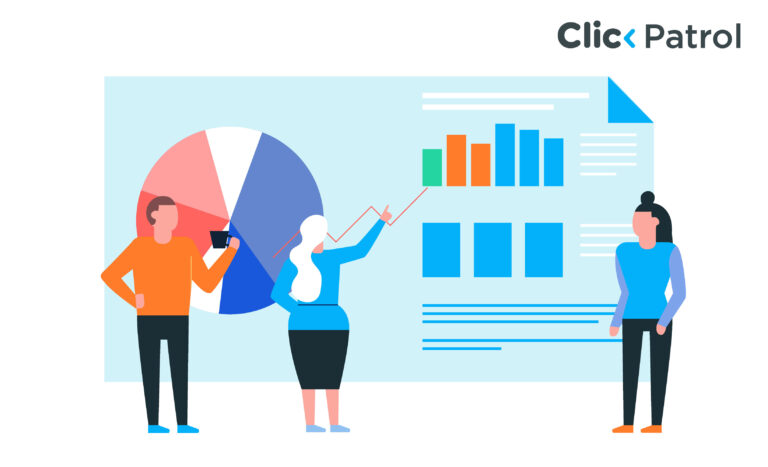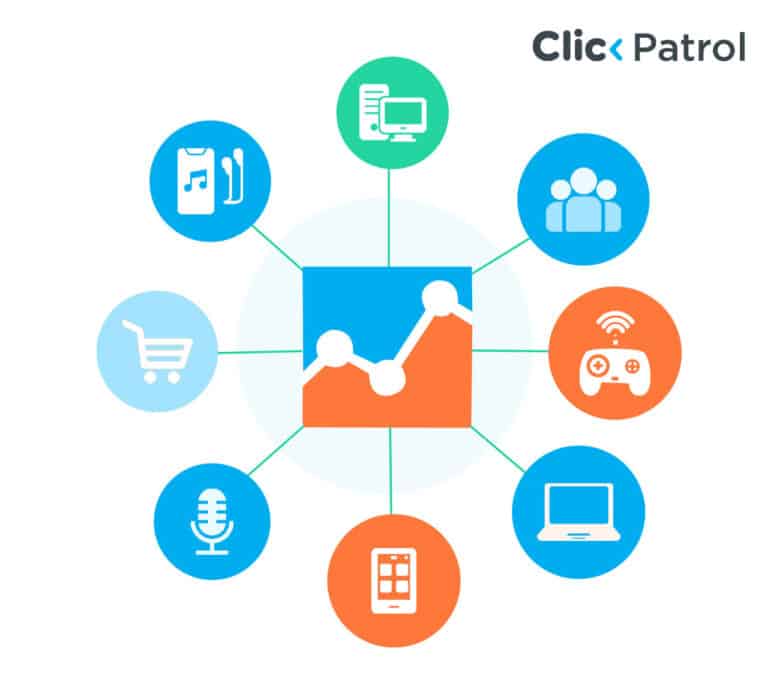
Understanding Shopify and Click Fraud
Abisola Tanzako | Mar 18, 2024

Table of Contents
Is there a link between Shopify and click fraud?
In the present digital age, e-commerce platforms and online advertising have seamlessly integrated into the very fabric of our everyday existence. Among these platforms, Shopify has carved a niche as a premier e-commerce solution, empowering businesses to establish online stores and sell their products seamlessly.
However, the surge in online advertising has given rise to a new form of invalid activity called click fraud. This deceptive practice involves the generation of illegitimate clicks on pay-per-click advertisements, often with the intent of draining a competitor’s advertising budget or inflating one’s ad revenue.
This article aims to shed light on Shopify as an e-commerce platform, the concept of click fraud, and the relationship between the two. It delves into how click fraud can impact businesses operating on Shopify and explores some frequently asked questions related to this topic. The goal is to equip you as a reader with a comprehensive understanding of Shopify and click fraud, enabling you to navigate the digital marketplace more effectively.
Understanding Shopify
Shopify is a subscription-based software-as-a-service (SaaS) platform aiding small businesses in establishing an online presence for their stores and facilitating sales on various channels. It allows merchants to create a modern online store and sell through social media platforms, seller marketplaces, multiple blogs and websites, and communication channels like email, text, and chat. Shopify provides diverse plans tailored with distinct features to cater to different business needs and services, catering to businesses of all sizes.
Shopify, which began as a small team of five in a coffee shop, has now grown into a global organization with over 10,000 employees. As it supports millions of businesses worldwide, Shopify remains dedicated to the growth of its people and the betterment of their communities.
Shopify is committed to creating an equitable future by designing products and programs that support its team and merchants. It aims to facilitate independence by making the process of starting, operating, and growing a business easier. Shopify believes in a future of commerce that includes more voices, not fewer and is, therefore, working to lower the barriers to business ownership to improve commerce for everyone.
What is Click Fraud?
Click fraud is a deceptive practice involving the illicit clicking of pay-per-click (PPC) advertisements to either boost a website’s revenue or deplete a competitor’s advertising budget. This invalid activity, which both humans and automated bots can carry out, poses a significant risk to the credibility of online advertising campaigns.
In a typical scenario of click fraud, an individual or a bot masquerades as a genuine visitor on a website and interacts with an advertisement, a button, or any other form of hyperlink. The primary objective of this deceitful act is to mislead a digital platform or service into believing that authentic users are engaging with a webpage, an advertisement, or an application.
This false impression can lead to skewed performance metrics and inflated advertising costs, which can have financial implications for businesses.
Types of Click Fraud
1. Domain spoofing
Domain spoofing is a deceptive practice where fraudsters construct websites that closely resemble legitimate ones, using almost identical domain names. These imitation websites are populated with digital advertisements intended to deceive genuine visitors. When these visitors click on the ads, believing them to be authentic, it generates revenue for the fraudsters. This invalid activity undermines the trustworthiness of the internet and can lead to financial losses for both users and advertisers.
2. Ad Fraud
Ad fraud is a deceptive practice in which a website owner manipulates pay-per-click (PPC) display ads. The owner employs click bots and automated programs to interact with these ads. Each interaction is perceived as a legitimate user click, prompting the ad network to compensate the website owner. This invalid activity inflates the site’s revenue at the expense of the ad network and advertisers.
3. Competitor Click Fraud
Competitor click fraud is a deceptive practice in the world of non-human traffic. In this scenario, companies deliberately aim at their competitor’s pay-per-click (PPC) advertisements with invalid clicks. The primary goal is to deplete their rivals’ advertising budgets, leading to financial distress. This unethical strategy disrupts the spirit of fair competition and substantially negatively affects a company’s online advertising efforts.
4. Click Farms
Click farms represent a click fraud where numerous low-wage workers are employed to interact with hyperlinks or buttons on behalf of the fraudster. These individuals engage with the targeted website for a particular duration, potentially subscribing to newsletters before proceeding to another link.
Predominantly found in developing nations, click farms can artificially boost social media likes and followers, inflate website traffic and clicks, or enhance views on platforms such as Spotify, Twitch, and YouTube. Additionally, they can fabricate reviews for businesses, products, or services, further distorting online perceptions.
5. Cookie stuffing
This is a type of non-human traffic in which a malicious campaign artificially inflates the number of invalid ad conversions by generating invalid clicks. This can distort advertising metrics and lead to financial losses for advertisers. It’s a deceptive practice that undermines the integrity of online advertising.
6. Click Hijacking
Click Hijacking is a form of click fraud where an attacker manipulates a user’s click on one advertisement to register as a click on a different ad. This deceptive practice effectively “steals” the click, causing it to benefit an unintended recipient. It disrupts the accuracy of ad performance metrics and can lead to financial losses for the original advertiser.
The relationship between Shopify and Click Fraud
Shopify is a leading e-commerce platform that uses machine learning technology to predict and flag potential invalid clicks, a common issue in online advertising. Thus, Shopify protects its merchants from fraudulent transactions.
Shopify is a powerful springboard for online stores, equipping them with the necessary tools to connect with customers. However, this venture into the digital marketplace has challenges, including the covert threat of click fraud.
Click fraud does not target Shopify directly but the advertising platforms that Shopify users integrate with, such as Google Ads or Facebook Ads.
This is where the link becomes crucial. When fraudsters maliciously click on a Shopify store’s ad on these platforms, they inflate the advertising cost without genuine interest in the product or service. This action drains the store’s budget and distorts campaign data, making it challenging to measure success accurately and optimize marketing strategies.
In essence, while Shopify provides the digital storefront, click fraud lurks in the shadows of the advertising avenues, draining off the store’s budget without ever truly engaging with the store. It’s an invisible menace in digital marketing, emphasizing the necessity for alertness and robust security measures.
Can Click Fraud occur on Shopify?
Click fraud can occur on Shopify, as it can on any online platform that uses pay-per-click advertising. This deceptive practice involves generating illegitimate clicks on an ad, often to deplete a competitor’s advertising budget or boost one’s ad revenue.
For businesses on Shopify, this can significantly drain their advertising budget and create obstacles to effectively reaching their target audience. Each invalid click not only incurs a cost for the advertiser but can also distort the metrics used to gauge the success of an ad campaign. Nonetheless, Shopify is dedicated to safeguarding its merchants from such invalid activities. It utilizes cutting-edge machine learning technology to predict and flag potential fraud across its network.
Additionally, Shopify offers Shopify Protect, a complimentary fraud protection service for eligible US-based Shopify stores. This service covers the cost of the order and the chargeback fee for invalid transactions. Despite these protective measures, businesses must remain vigilant and closely monitor their ad campaigns to detect any irregularities promptly.
Impact of Click Fraud on Shopify
Click fraud poses a significant impact on businesses operating on platforms like Shopify. This deceptive practice can lead to the squandering of their advertising budget and create obstacles to reaching their intended audience. Each invalid click not only depletes the budget but also skews the perceived success of an advertising campaign.
For instance, a business might be led to believe that a specific keyword is attracting substantial traffic and, consequently, invest more heavily in that strategy. However, they may need to realize that this traffic is not genuine but the result of non-human traffic. This can lead to misguided business decisions and potential financial losses.
How to Identify Click Fraud on Shopify
Identifying click fraud on Shopify necessitates a blend of alertness and the application of specialized tools. Shopify utilizes cutting-edge machine learning technology to anticipate and highlight potential invalid activities across its network.
Furthermore, numerous fraud analysis applications, including FraudLabs Pro, Signifyd, and Riskified, are available in the Shopify App Store. These applications employ complex algorithms and data analysis techniques to identify potential fraudulent orders and customers. It’s also crucial for businesses to meticulously review each order before fulfillment. By leveraging these resources and maintaining a vigilant eye on ad campaigns, Shopify users can effectively identify and prevent click fraud.
How to prevent Click Fraud on Shopify
Shopify provides several tools and strategies to help prevent click fraud:
Fraud Filter App: Shopify’s Fraud Filter app allows you to create custom tripwires with rule-based functionality. Fraud Filter can notify you of potentially suspicious orders or cancel them automatically using your defined rules.
Shopify Fraud Control: Shopify’s in-house fraud prevention system works with banks, credit card companies, Internet providers, and others to identify fraud and classify orders after a complete fraud analysis.
Third-Party Tools: Third-party tools such as Clickpatrol, can help advertisers find and stop click fraud on Shopify ads.
Conclusion
Shopify offers a powerful platform for online businesses, but it is not immune to the pervasive issue of click fraud. This form of invalid activity poses a substantial challenge, threatening the effectiveness and profitability of online advertising efforts. However, with the appropriate tools and strategies, businesses can significantly reduce the risks associated with invalid clicks.
Businesses must remain vigilant, closely monitor their advertising campaigns, and utilize all resources to guard against invalid clicks. This includes employing advanced fraud detection tools, reviewing ad traffic data for anomalies regularly, and staying updated on invalid clicks.
By taking these proactive measures, businesses can ensure a more secure online presence, making their advertising efforts more effective and profitable.
FAQs
How does Shopify protect against fraud?
Shopify employs various measures to protect against fraud. It uses advanced machine learning technology to predict and flag potential fraud across its network. Shopify also offers Shopify Protect, a free fraud protection service for eligible US-based Shopify stores. This service covers the cost of the order and the chargeback fee on fraudulent transactions. Additionally, Shopify’s network uses data to catch fraud and secure businesses daily. These measures help companies to focus more on growth and less on fighting fraud.
Is click fraud a big problem for Shopify users?
Yes, click fraud is indeed a significant problem for Shopify users. It can lead to the waste of their advertising budget and create barriers to reaching their target audience. Fraudulent clicks not only cost the advertiser money but can also skew the metrics used to measure the success of an ad campaign. Shopify businesses need to protect themselves from click fraud.
How can businesses protect themselves from click fraud?
Businesses can use tools like ClickPatrol to detect and stop non-human traffic. These sophisticated tools are designed to help advertisers identify suspicious activities in their campaigns. They monitor traffic and flag unusual patterns, blocking harmful bots before they cause significant damage.
By adopting this proactive approach, businesses can safeguard their interests in online advertising efforts and ensure they reach genuine customers.
Can I report click fraud on Shopify?
Yes, you can report click fraud on Shopify. If you suspect a violation of Shopify’s practices, you can go to Shopify’s page to report an issue with a merchant. Feel free to complete the questionnaire that is displayed with the details of your complaint and then submit it. It’s important to stay vigilant and monitor your ad campaigns closely to detect any irregularities early.

